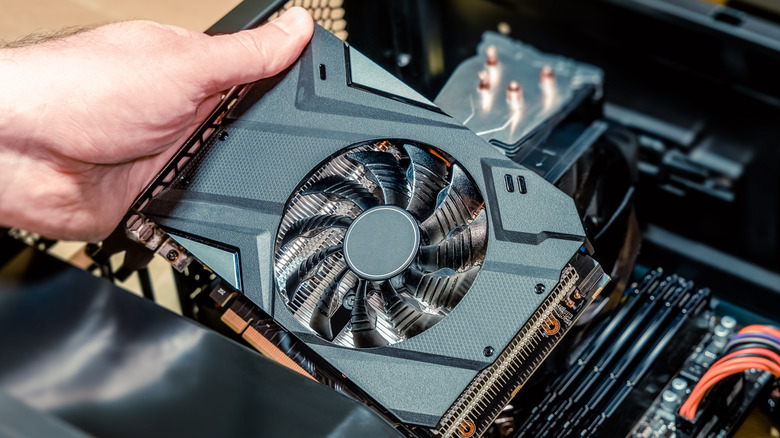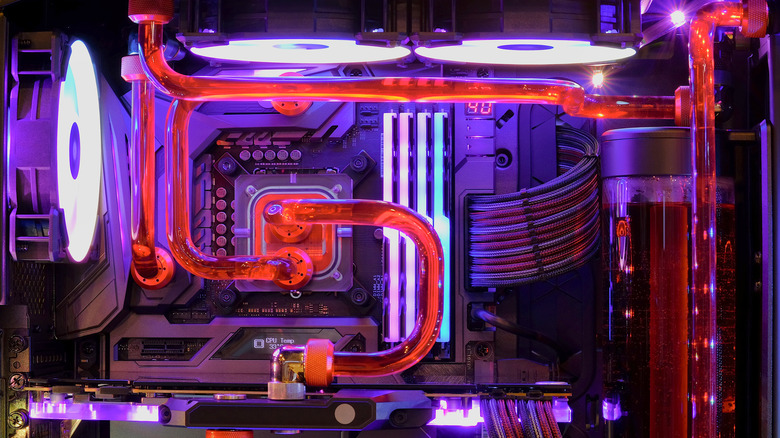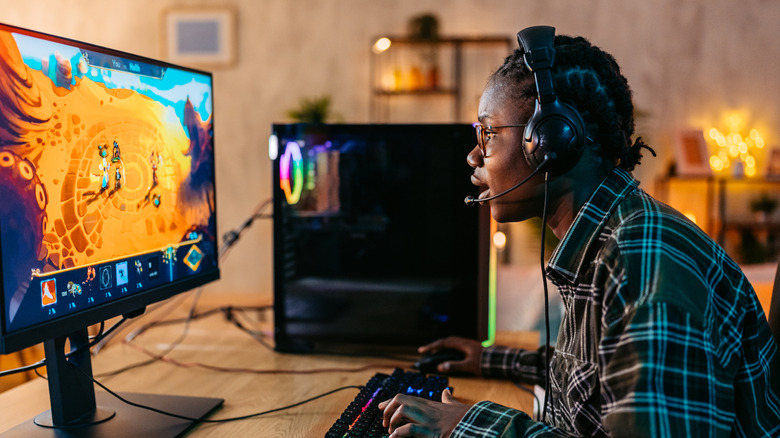This Is How Cheap You Can Go If You Want A Decent Gaming PC
We may receive a commission on purchases made from links.
Modern high-end gaming PCs are capable of running demanding games smoothly, but they're not cheap — and they're only getting more expensive. As someone who played her first PC game back in the mid-1990s, I remember the days when 128MB of RAM was considered "recommended" for a brand-new title. Things are quite different today: PCs offer far greater levels of depth and immersion, and the games they run demand higher performance specs than ever before. How could anyone be expected to afford a decent gaming PC in such a competitive environment?
That's originally what I thought. Despite being a lifelong gamer, my own budget forced me to stick to older titles for years. Over time, I gained experience and learned that well-built PCs aren't actually that much pricier than consoles. Of course, higher-end stuff can cost as much as a used car, but if you're comfortable with medium graphics, you have plenty of options.
Naturally, PC gamers have their own unique opinions on what constitutes a "well-built PC," which brands make the best stuff, and how cheap you can go while maintaining solid performance. Therefore, for this experiment, I'll first define a baseline concept of "decent," and create an example PC with a budget cap of $1,000. I'll walk you through all the core components as well as where to shop. That way, you can build your own PC to similar specifications, or find less-expensive parts of similar standards. Lastly, keep in mind that many upgrades are cheaper than you think, so it may be more cost-effective to upgrade your existing PC rather than build one from scratch.
What is decent in PC gaming, and how to pick the right PC?
PCs can be built at many different budgets, but the reason why I set a cap of $1,000 relates to the current demands of popular AAA gaming. Modern games often call for graphics cards that cost $500 and more, although they're cheaper when bought refurbished. Still, used prices fluctuate wildly, and you never know what quality you'll get, so we'll stick to new parts. I'll be using the site PC Part Picker for my data, since it tracks prices and compatibility. Theoretically, if I were to buy these parts separately on the second-hand market, I could save a lot of money with patience and persistence, but we're looking for consistency and the worst-case scenario.
Likewise, I'll also look at pre-built PCs independently. A pre-built is a ready-made PC, as opposed to a custom build, which is a DIY project that you have to put together by yourself. I won't get into the debate about pre-built vs. DIY PCs and which option is better; instead, I'll try to help you choose the one that suits your needs.
The first question you should ask before selecting parts is this: What games do you want to play? Some titles are more GPU-intensive, while others are more taxing on the CPU. Some require 16 GB of RAM, whereas one of the world's most popular games, Minecraft, requires just 4 GB. Therefore, the first thing to do is to read the recommended specs of your favorite titles and determine what your rig needs. In this example, I'll build a PC that can run "Cyberpunk 2077" with recommended settings at 1080p while maintaining around 60 frames per second (fps).
Build your gaming PC yourself
I've attached a cheat sheet of my hypothetical build. Keep in mind that this doesn't include a monitor, an operating system, or peripherals. Before sharing this build with you, I had it privately reviewed by several forums I frequent to make sure that this is the most cost-effective option right now. Here's why I chose some of the key parts.
First, let's start with the processor. I prefer the Intel Core i5-12400F for a budget 1080p build, priced at just over $100 when not on sale. You'll also need a CPU cooler and a case, which typically cost around $40 each if you're sticking to budget options. "Cyberpunk 2077" requires at least an Nvidia RTX 2060 Super or an AMD Radeon RX 5700 XT, but those cards are no longer in production, so I went with a modern alternative. I've opted for the AMD RX 9060 XT with 16 GB VRAM, which currently sells for around $370. This represents the bulk of the cost, but as an avid in-game photographer, the additional horsepower helps me capture stunning screenshots during gameplay.
If you know you enjoy certain aspects of games, you can spend more on components that enhance those. Alternatively, for something more entry-level, Amazon sells an RTX 3050 for about $200, but the RTX 5060 is a better option at $300. Certain brands will be better at certain tasks; for instance, if you want ray tracing and have some budget left over, you might prefer Nvidia for its RT performance, although AMD is catching up. You might also have to factor in the cost of paying a custom PC builder to put the computer together for you, unless you're willing to do it yourself.
Pick out a pre-built
Next, let's look at pre-builts. There are plenty of good-quality gaming pre-built PCs for under $1,000, but are those better than building your own PC? Here are a few factors to consider.
Convenience plays a part. Pre-builts come with everything you need, and are built for you in advance. Plus, most pre-built systems are upgradeable, so you could buy something more budget-friendly and spend the extra money on upgrades to the CPU and GPU later on. Even with a budget pre-built and later upgrades, it's possible to stay under $1,000 and still hit playable specs for modern games. One option is this CyberPowerPC Gamer Xtreme with the Intel Core i5-13400F processor and an RTX 5060, priced at $990.
The name of the pre-built game is defined by this economy of scale, where companies can build in bulk, reducing costs per unit. This proved especially useful when GPU prices skyrocketed. At one point, buying one of the best GPUs alone cost as much — or more — than a full pre-built PC. That is still the case today with GPUs like the RTX 5090.
I typically recommend pre-builts to people who are looking for something broader in scope or are more generalized in their PC usage. These machines frequently come with an OS, so you don't have to pay extra for that, and they're usually covered by warranty. With a DIY PC, you need to know which part failed and deal with individual warranties. Pre-builts are easier in terms of plug-and-play with less hassle for those unfamiliar with high-end PCs, even if they may not have everything you want out of the box. Still, without the shipping overhead or headaches from assembly, it can actually be more cost-effective to go pre-built if you're on a tight budget.



